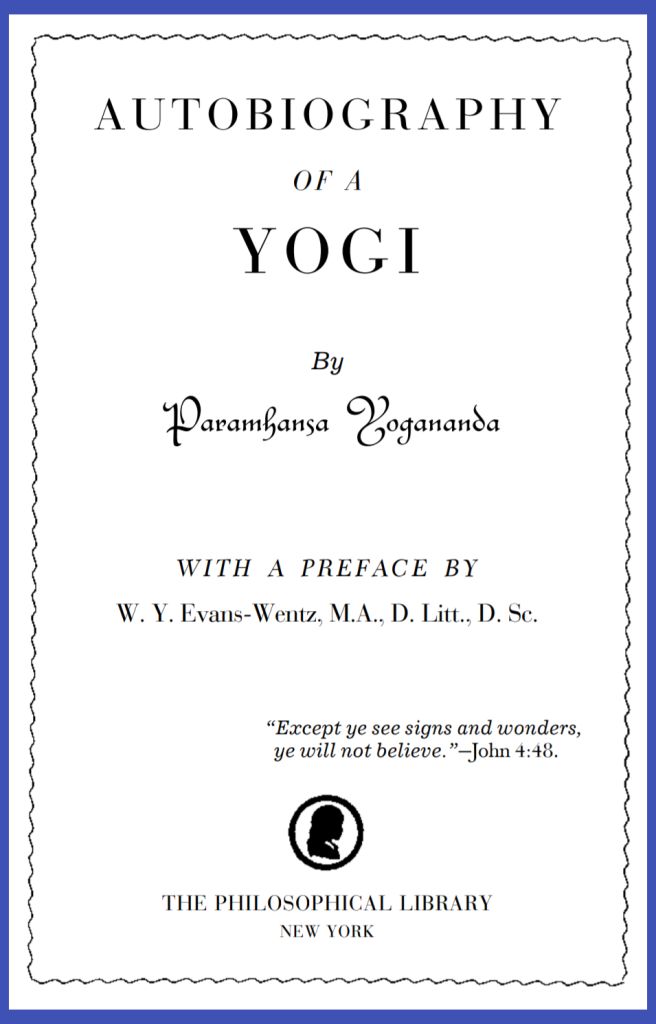Hinduism
Hinduism is the third most populous religion in the world with followers comprising 15-16% of global population. It is a diverse system of thoughts and practices marked by a range of philosophies and shared concepts, rituals, and cosmological systems. Followers share textual sources that discuss theology, metaphysics, mythology, yoga, rituals, and temple building, among other topics.
Hinduism originated in India subcontinent and then spread elsewhere. By about 100 CE Hinduism had spread to Afghanistan and practically all countries in Southeast Asia. Below is a map showing the expansion.
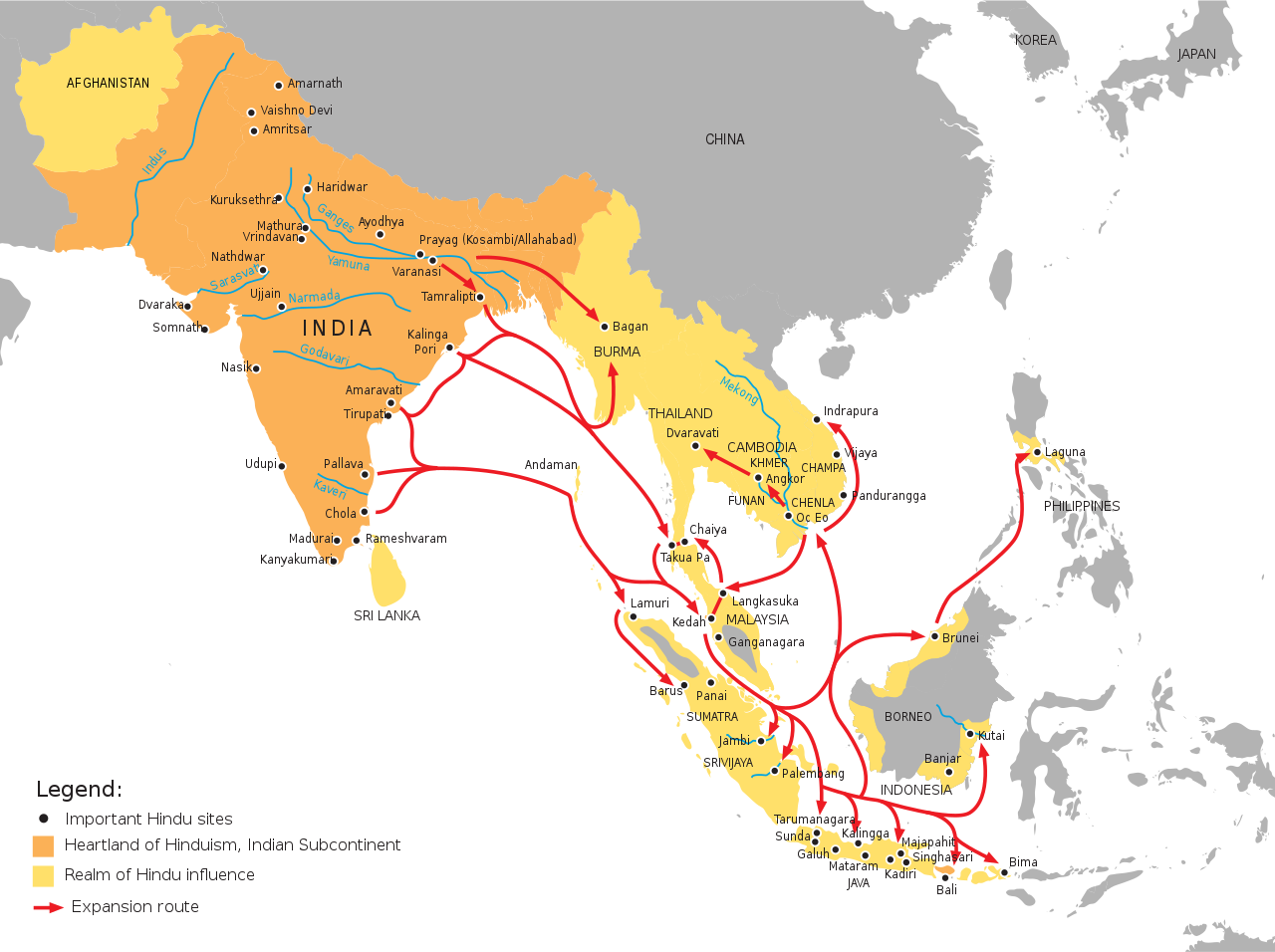
Followers of Hinduism built temples to worship various Hindu deities. Below is the Angkor Wat temple complex in Cambodia:
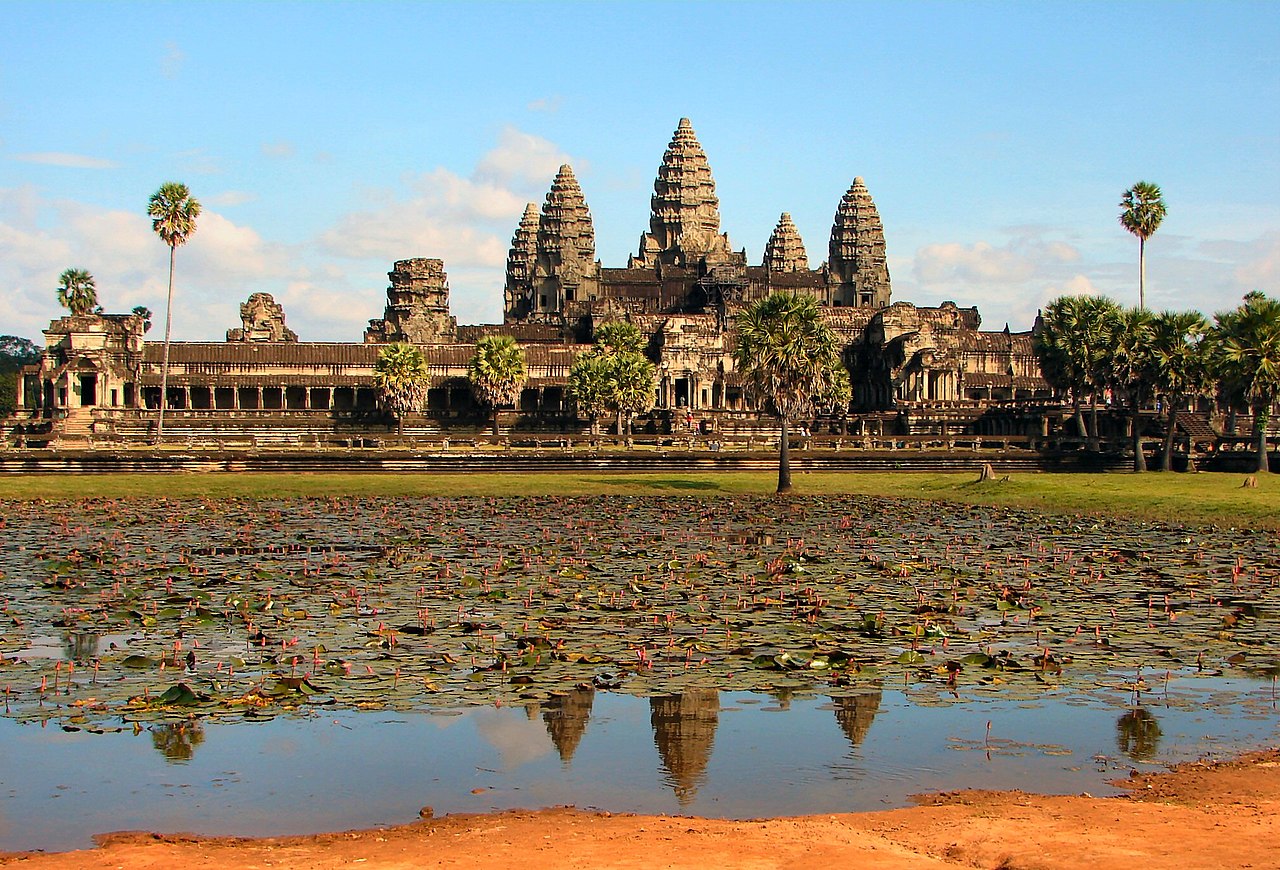
Below is the Prambanan temple compound in Yogyakarta region, Indonesia:
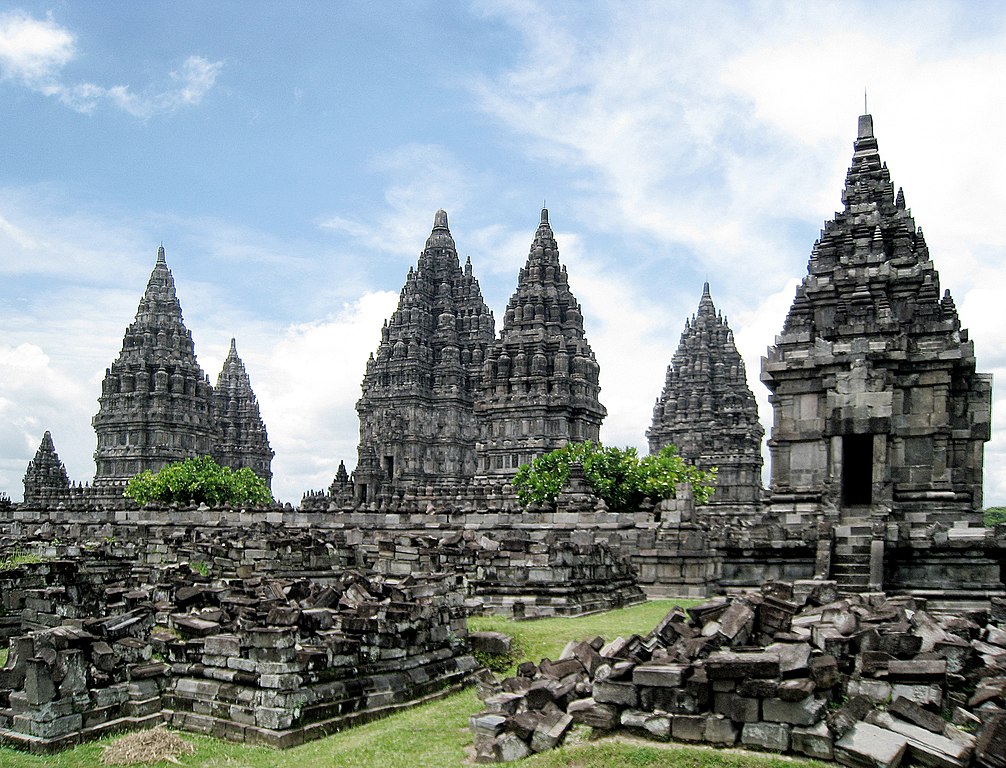
Ancient artifacts were left behind in various countries. Three are shown here: (1) dancing Shiva in Vietnam, (2) statue of Durga in Java, Indonesia, and (3) solar deity Surya sitting in a chariot in Afghanistan.
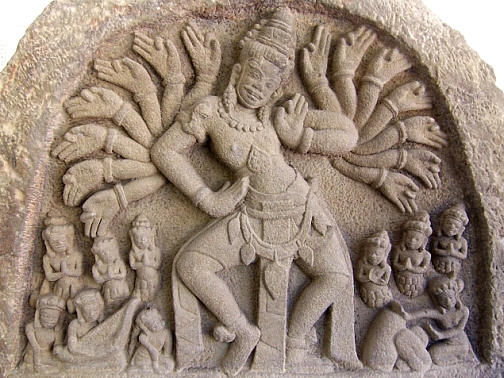

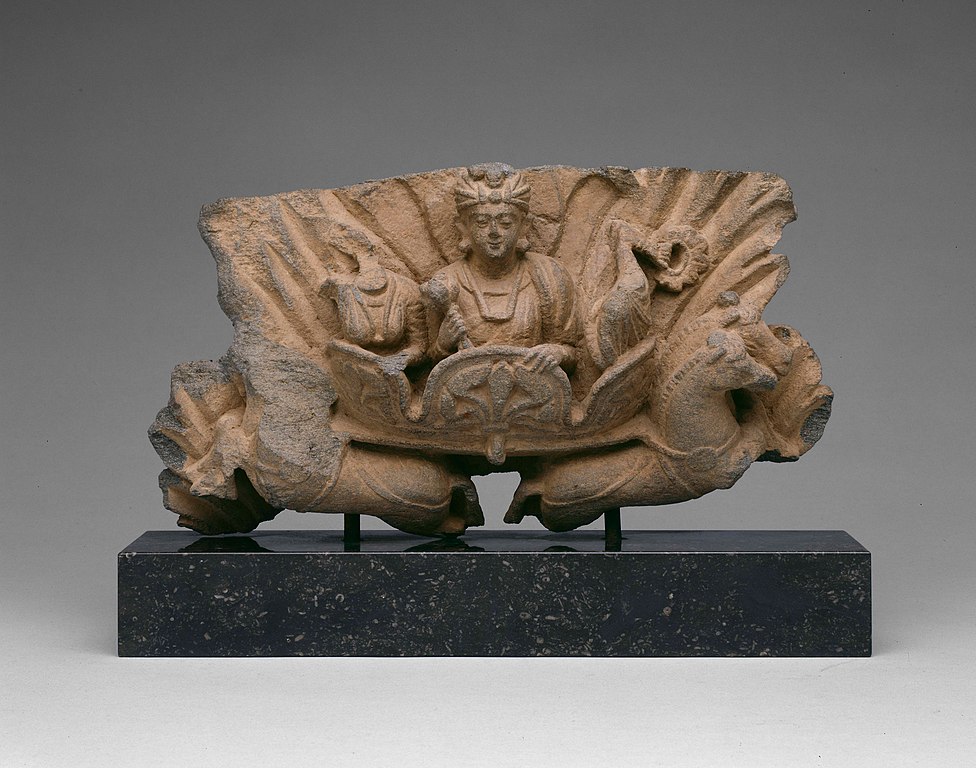
(map and pictures are from Wikipedia)
Starting from the 7th century, Islamic caliphates became powerful militarily and economically. Islamic merchants conducted trades with many countries by land and by sea. People in many areas were converted to Islam, including some of the areas that were under the influence of Hinduism. These areas included Afghanistan and part of Southeast Asia such as Malaysia and Indonesia. Today only a few countries have sizable percentage of population who are Hinduism followers. The list below shows countries that have over 20% of their population who are Hinduism followers:
Nepal, Asia, 81%
India, Asia, 80%
Mauritius, Africa, 49%
Fiji, Oceania, 28%
Guyana, South America, 25%
Bhutan, Asia, 24%
Suriname, South America, 24%
Hinduism has evolved over several thousand years. Various philosophical or theological schools developed in Hinduism through a dynamic tradition of intelligent inquiry and debate. From timeless and universal questions such as the purpose of life to the relationship between humans and the Divine emerged many philosophical schools. The teachings of these school contribute to the different ways of “seeing” the Divine and attaining "moksha," which is liberation from the cycle of birth and rebirth. Below is a brief description of some of the schools:
(1) Nyāya: A system of logic proving the existence of the Divine as well as other core Hindu concepts such as karma. Nyāya insists that nothing is acceptable unless it is in accordance with reason and experience. As a result the Nyāyaa school developed great insights in logic and epistemology that influenced other schools and religions. For example, Buddhists later picked up these insights and expanded on them (see a discussion of Buddhist logic). If you are interested to learn more, you can read an English translation of the ancient Nyāya Sūtras, which is Vol. VIII of a book series called "The Sacred Books of the Hindus".
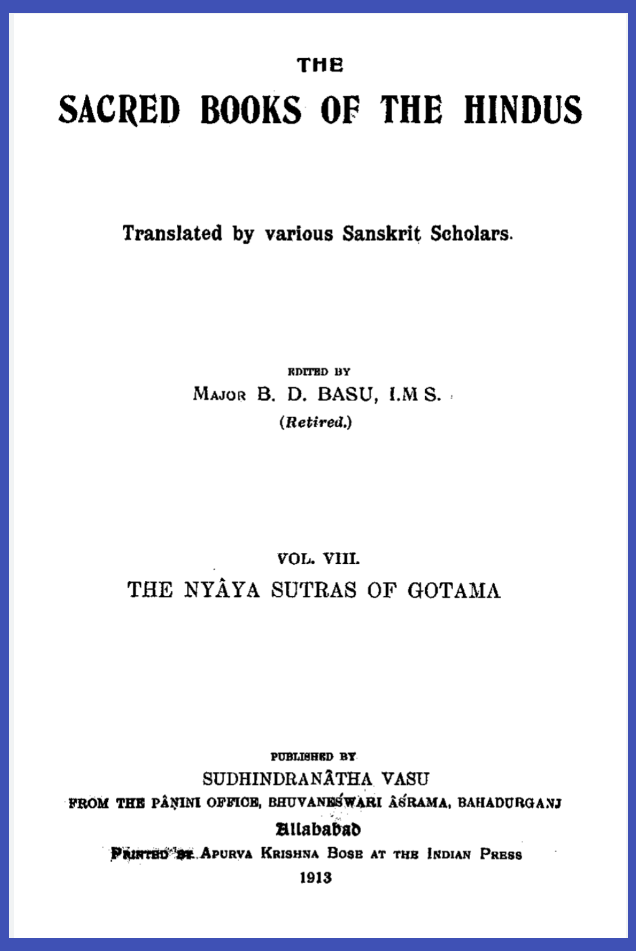
(2) Sankhya: Considered one of the oldest schools of thought. Sankhya divides all of existence into two categories – Purusha (divine consciousness) and Prakriti (matter). When Purusha comes into contact with Prakriti they give rise to 23 "tattvas," including intellect, ego, mind, sensory capacities, elements (earth, water, fire, air and space), etc. If you are interested, you can read a translation of one of the earliest surviving text of this school, Sāṁkhya Kārikā. The text's original composition date is unknown, but its "completed before" date has been established through its Chinese translation that became available by 569 CE.
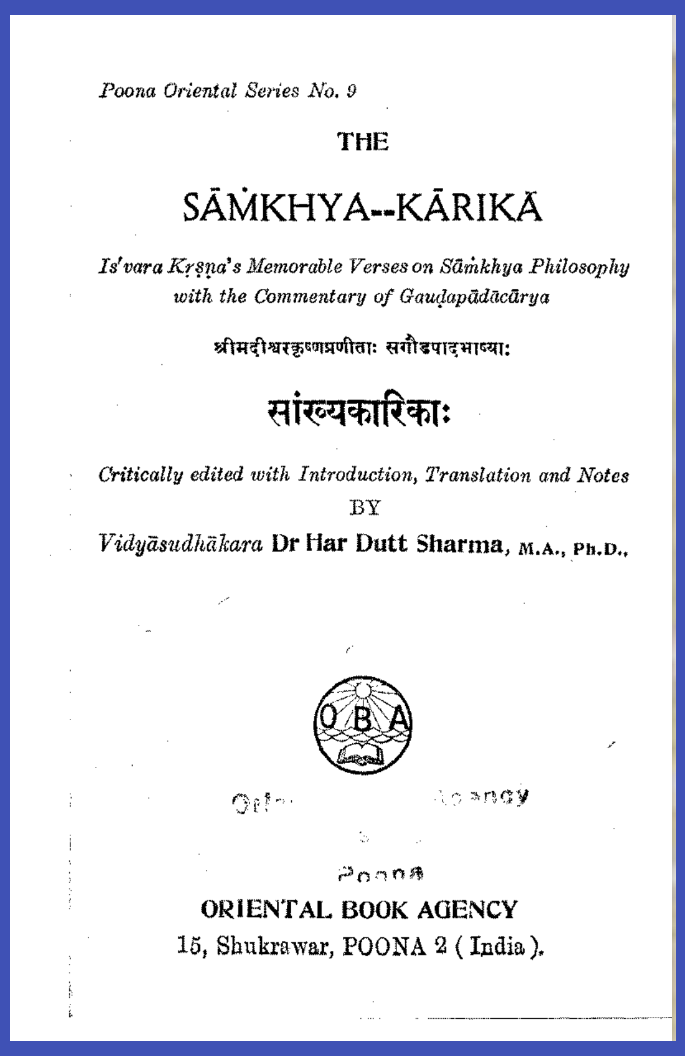
(3) Yoga: More aptly called Raja Yoga, which focuses on quieting the mind through an eight limb system (Ashtanga yoga) as described in Patanjali’s Yoga Sutras for a balanced life and ultimately moksha. If you are interested, you can read an English translation of Yoga Darśana - The Sutras of Patanjali with the Bhasya of Vyasa.

(4) Purva Mimamsa: This school interpreted the rules of Vedic rituals because they considered perfection in rituals as a path towards moksha. The oldest known Vedic text is the Rigveda, which had been orally transmitted since the 2nd millennium BCE. If you are interested, you can read a book titled A Vedic Reader for Students, which contains many Vedic hymns used in rituals.

(5) Vedanta: Arguably the most influential on modern Hinduism and relies primarily on transcending one’s identification with the physical body for liberation. The means by which an individual can transcend one’s self-identity is through right knowledge, meditation, devotion, selfless service, good works amongst other religious and spiritual disciplines. Major subschools of Vedanta include Advaita, Dvaita, and Visishtaadvaita. The Vedanta Sūtras, also called the Brahma Sūtras, is a Sanskrit text, attributed to the sage Badarayana or sage Vyasa, estimated to have been completed in its surviving form in approx. 400–450 CE, while the original version might be ancient and composed between 500 BCE and 200 BCE. The text systematizes and summarizes the philosophical and spiritual ideas in the Upanishads. An English translation of it is provided below in three volumes:
The Vedanta Sūtras, Volume 1 (file size: about 11 MB)
The Vedanta Sūtras, Volume 2 (file size: about 10 MB)
The Vedanta Sūtras, Volume 3 (file size: about 16 MB)
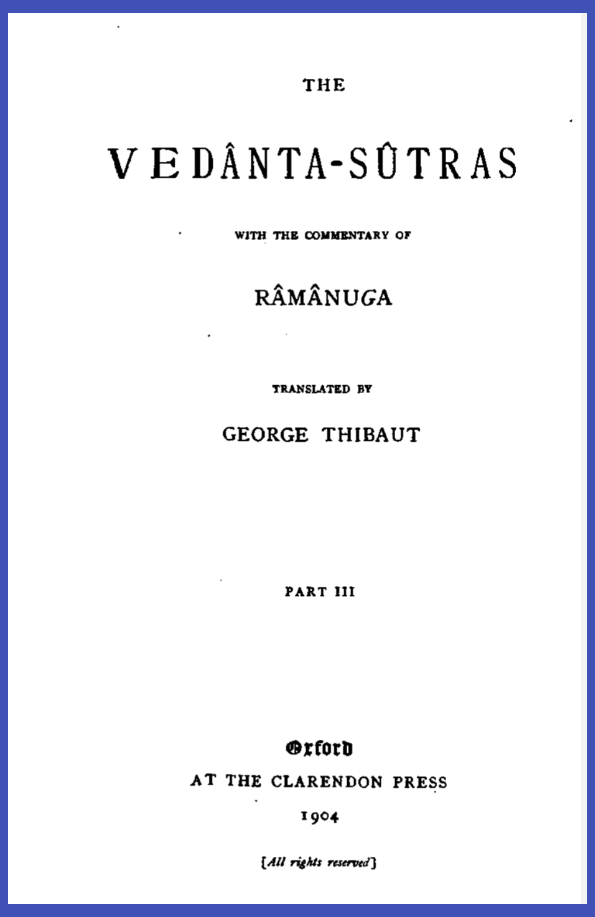
Hinduism is rich in scripture and includes an extensive collection of ancient religious writings. These sacred texts are classified broadly into two categories: (A) Shruti and (B) Smriti.
The word Shruti literally means “heard” and consists of what Hindus believe to be eternal truths akin to natural law. These texts are revered as “revealed” or divine in origin and are believed to contain the foundational truths of Hinduism.
The second category of scripture is Smriti, which literally means “memory,” and is distinguished from Shruti in terms of its origin. Smriti texts are usefully attributed to an author (although the actual author may not be known) while Shruti texts are considered timeless and authorless. Teachings in Smriti texts are meant to remind adherents about the eternal truths of Shruti, and read and interpreted in light of changing circumstances over kala (time), desha (land), and guna (personality).
Some of the most well known texts include:
(A) Shruti category
Vedas: The word Veda means “knowledge”. There are four Vedas: Rig, Sama, Yajur and Atharva, of which the Rig Veda is the oldest. If you are interested, you can read here an English translation of the Four Vedas.
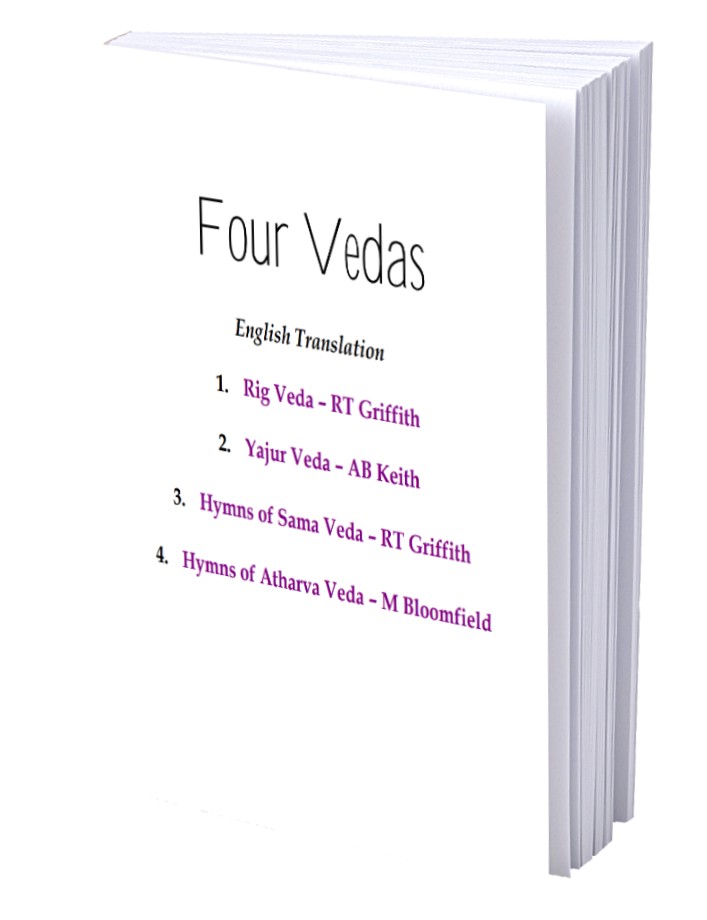
Upanishads: These texts, numbering over 100, contain an extensive exploration of the methods of understanding the self, God, and the nature of the world. An English translation of some of the texts can be found here: The Upanishads.

(B) Smriti category
A few books in this category are provided here.
(1) Ayurveda: Books on science of health and life. If you are interested, you can read an English translation of Suśruta Saṃhitā. It is an ancient Sanskrit text on medicine and surgery, and one of the most important such treatises on this subject to survive from the ancient world. The translation is in three volumes:
The Sushruta Samhita Vol. 1 (file size: about 11 MB)
The Sushruta Samhita Vol. 2 (file size: about 13 MB)
The Sushruta Samhita Vol. 3 (file size: about 10 MB)
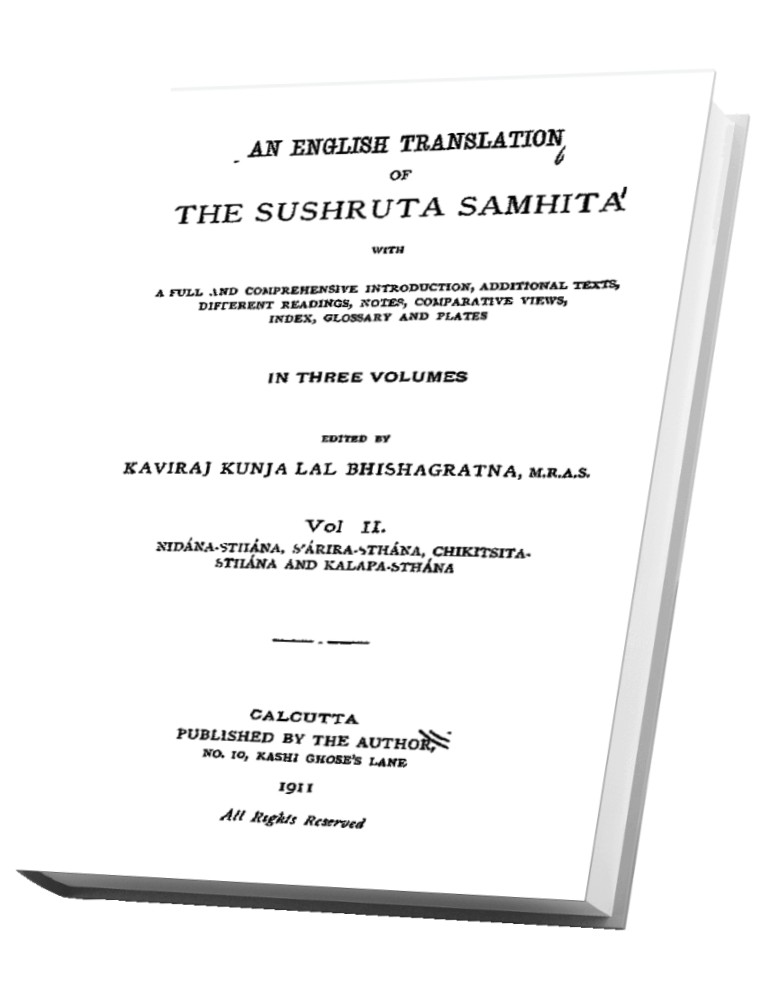
(2) Ramayana: This popular epic tells the life story the noble prince named Rama, whom Hindus believe to be an incarnation of the Divine. Prince Rama suffers year of exile and many hardships while destroying powerful demons before returning to rule his kingdom. It you are interested in the epic, you can read an English translation of Ramayana of Valmiki.
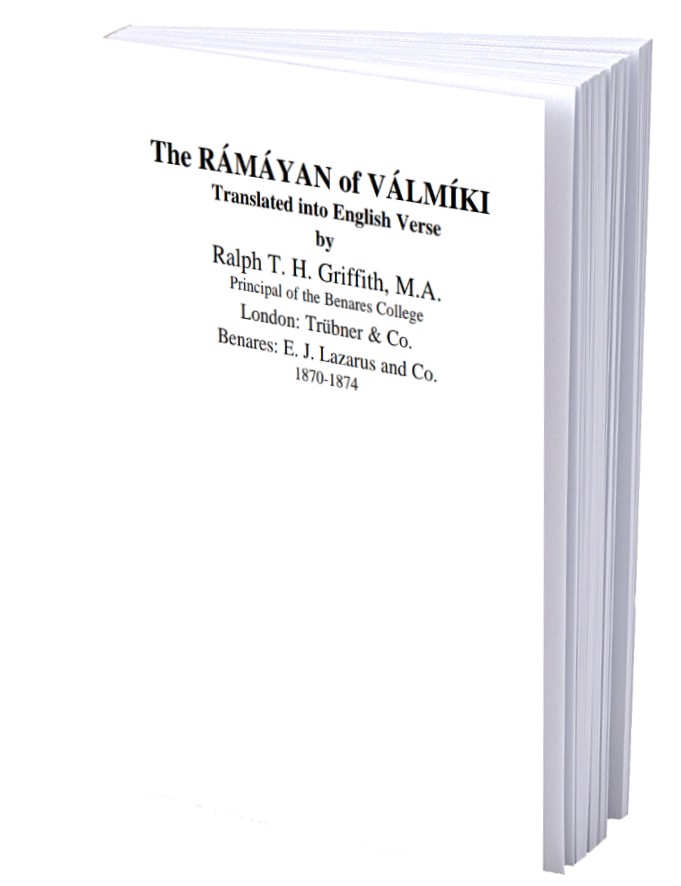
(3) Mahābhārata: With over 100,000 verses, the Mahābhārata is a historical epic, and is the longest ancient poem the world has known. Based on an extended conflict between two branches of the Kaurava family, the Mahābhārata is a trove of stories and discourses on the practice of dharma (including the importance of truth, justice, self sacrifice, and the upholding of dharma), the need for complete devotion to God, and the ultimate futility of war. If you are interested, you can read an English prose translation of Mahābhārata of Vyasa by Kisari Mohan Ganguli (file size: about 16 MB).
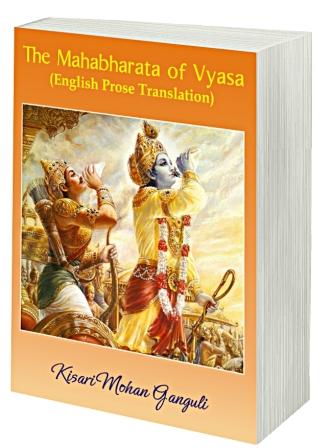
(4) Bhagavad Gita: The Bhagavad Gita is a primary scripture for Hindus. The Gita is set as a dialogue between a prince (Arjuna) and his guide and charioteer, Krishna, who is the Supreme Personality of Godhead. Although it is a tiny part of the Mahabharata and technically classed as a Smriti text, it is traditionally accorded the rank of an Upanishad. Gandhi, a leader of India's independent movement, wrote: "When doubts haunt me, when disappointment stare me in the face, and I see not one ray of hope on the horizon, I turn to Bhagavad Gita and find a verse to comfort me; and I immediately begin to smile in the midst of overwhelming sorrow." If you are interested, you can read an English translation of the Bhagavad Gita.
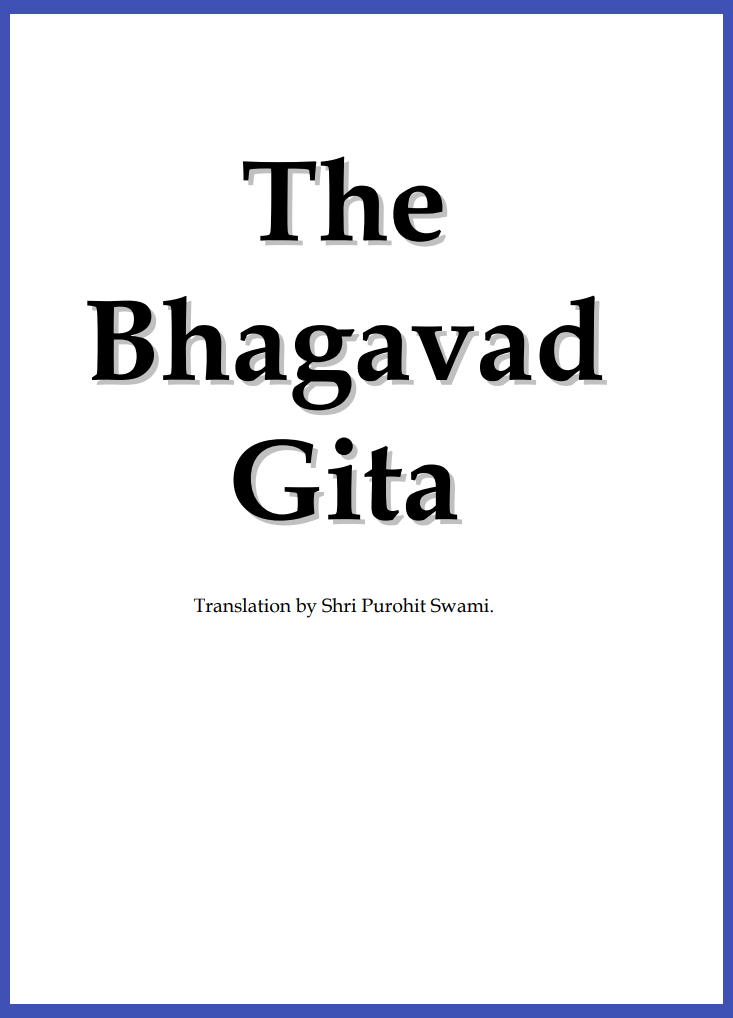
In the 20th century there have been efforts to introduce Hinduism to Europe and North America. On of the most prominent missionaries pursuing these efforts is Paramahansa Yogananda (1893-1952).
This is a picture of him: 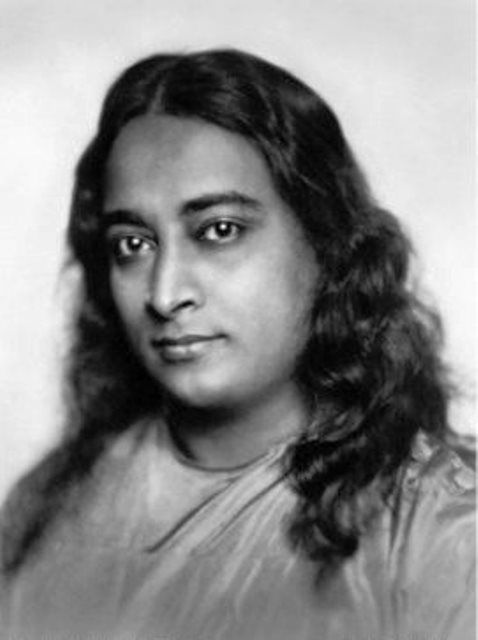
According to reporting, Steve Jobs, the deceased CEO of Apple, was a follower of Yogananda. In 2015 Inc. magazine published an article with the title: "Steve Jobs's Secret to Greatness: Yogananda -- The story of the spiritual teacher who was a silent force in the life of the most important entrepreneur of our times." In 2016 Professor Satinder Dhiman of Woodbury University in California wrote a paper titled "The Spiritual Quest of Steve Jobs." He wrote:
"The greatest influence on Steve Jobs, however, was the book Autobiography of a Yogi — “the guide to meditation and spirituality that he had first read as a teenager.” His biographer, Walter Isaacson, tells us, “then re-read in India and had read once a year ever since.” It was the only book Isaacson notes that Jobs downloaded on his personal iPad 2. Jobs’ credo “Actualize yourself” seems to have come directly out of Yogananda’s philosophy of Self-realization.
It has recently come to knowledge that copies of Yogananda’s classic autobiography were handed out at Steve Jobs’ memorial, as reported by Marc Benioff, CEO and Co-Founder of Salesforce.com in a Tech Crunch Disrupt SF 2013 conference interview. Benioff shares his story of opening the brown box that was given to every guest during the memorial service. Jobs had apparently arranged to give Yogananda’s Autobiography of a Yogi in his own memorial service as a last gift to the attendees!"
If you want to read the book recommended by Jobs, this is Yogananda's book Autobiography of a Yogi
